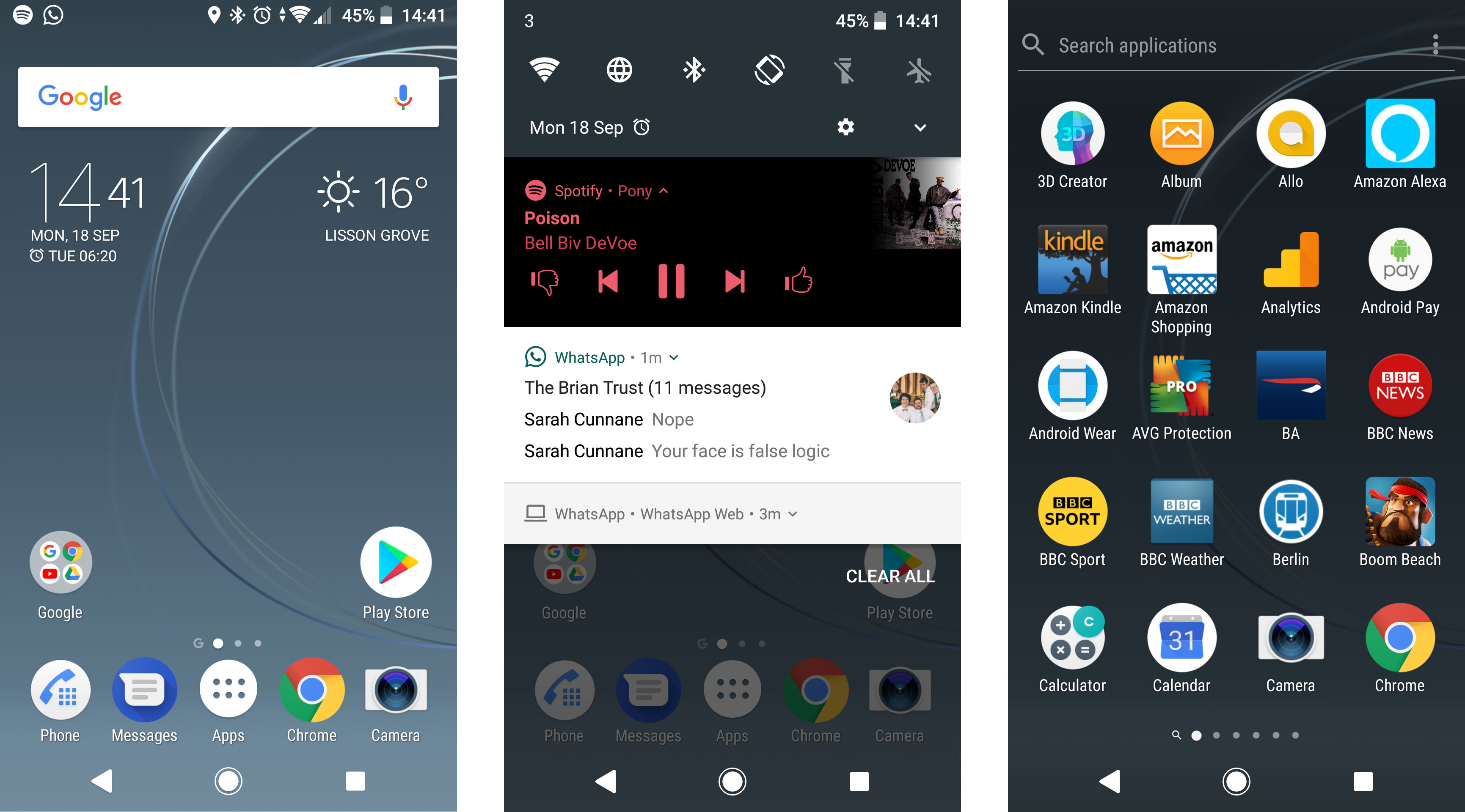Why you can trust TechRadar
Under the hood the Sony Xperia XZ1 has what it took to compete with the best that Android had to offer in 2017. Even today, it holds up pretty well in the performance stakes.
First up there's the operating system: it was one of the first smartphones to debut with Android Oreo out of the box, powered from a Snapdragon 835 and 4GB RAM.
In that department, the Xperia XZ1 was bang up to date for its time. Day-to-day, it still works with the same bravado that many of today's phones do, with slick navigation and quick app load times; even once we’d loaded our apps and taken a lot of photos, performance remained stable.
As with the XZ Premium, the Xperia XZ1 brings support for Hi-Res audio, and is even capable of upscaling MP3 tracks to sound better through a decent set of headphones.
Audio fans will also be pleased to learn that the phone features a 3.5mm headphone jack on its top edge, allowing you to plug in a set of cans without the need for an adapter. That's one reason you might want to pick this over something newer.

The result is excellent audio via a decent set of headphones, with the Xperia XZ1 capable of upscaling non-Hi-Res tracks, as well as fully supporting those already at the higher fidelity.
As we've mentioned, the dual front-facing speakers have also been given a boost, providing room-filling sound and improved bass – although we'd argue that the HTC U11 still offers the best built-in speaker experience.
Inside you get 64GB of storage, plus there's a microSD slot on the side of the XZ1 allowing you build on this by up to 256GB with a memory card.
Entering the third dimension
One of the big talking points for Sony on the Xperia XZ1 (and the smaller XZ1 Compact) is its new 3D Scan feature, which is an impressively fun offering – although realistically not something that you’ll use all that often, or which will likely sway your decision to buy the handset.
The 3D Creator app comes pre-installed on the handset, and uses the rear-facing camera to build a detailed three-dimensional model of a face, head, food or pretty much any other object you may fancy capturing in three dimensions.
It’s pretty quick too, as in under 60 seconds the camera can scan basically any object for sharing on social media, setting as your wallpaper or printing as a physical model from a 3D printer.
If you don’t own a 3D printer – and let’s face it, not many of us do – the app also provides an option to send the scan file to a third-party 3D printing service which can then mail you your model (for a cost, of course).
3D scans are saved in the standard .OBJ file format, which means they’ll be compatible with almost all 3D printers.
A photo posted by @techradar on Sep 19, 2017 at 9:23am PDT
We were impressed with the speed of scanning and processing of the 3D face and head renders on the Xperia XZ1, showing that the power packed in under the hood really does mean business.
However, it did struggle a little more with the free-scan mode, with random objects not rendering as nicely as the faces.
You can also modify scans after capturing them. Simple edits such as cropping, and brightness and contrast adjustments, are joined by tools that allow you to morph your 3D creations (for example to give face scans a big chin or an alien-shaped head).
The scanning app does grumble about poor light, so you’ll need to make sure your subject is as well lit as possible. Even in sub-optimal lighting though, the XZ1 manages to complete a scan.
Sony was keen to stress that 3D Creator is still in its formative years, and that there’s more to come from this tech in the future – although we haven't heard much about it since.
Current page: Anything else I should know?
Prev Page Battery life and camera Next Page Verdict and competition
TechRadar's former Global Managing Editor, John has been a technology journalist for more than a decade, and over the years has built up a vast knowledge of the tech industry. He’s interviewed CEOs from some of the world’s biggest tech firms, visited their HQs, and appeared on live TV and radio, including Sky News, BBC News, BBC World News, Al Jazeera, LBC, and BBC Radio 4.
